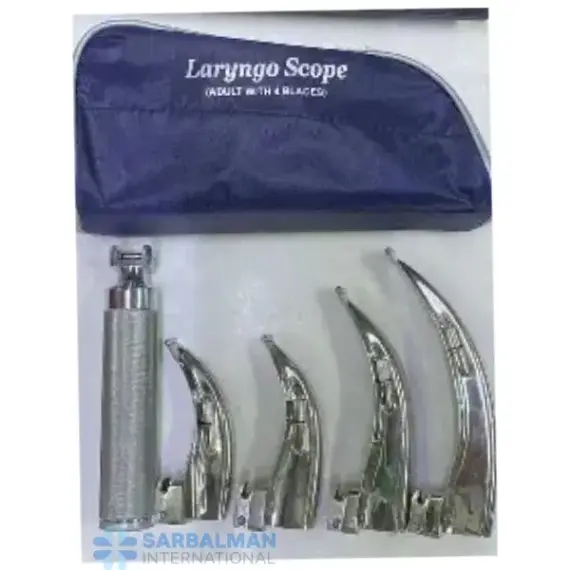Laryngoscope
Free!
A laryngoscope is a handheld, illuminated airway tool used to visualize the vocal cords and place an endotracheal tube in operating rooms, emergency care, and transport. It offers curved and straight blades in sizes for neonates to adults, with reusable or single-use options. Buyers choose it for dependable visibility, intuitive handling, and broad compatibility that supports quick, confident intubation across diverse clinical settings.
Description
A laryngoscope is a handheld instrument used to visualize the larynx and guide endotracheal intubation during anesthesia, emergency airway management, and critical care. It combines a sturdy handle with an illuminated blade to lift the tongue and epiglottis, creating a clear line of sight to the vocal cords. Available in adult, pediatric, and neonatal sizes, it is a core airway tool for hospitals, ambulances, and surgical centers.
Key features and benefits:
• Blade choices: curved (Macintosh) and straight (Miller) for different anatomy and clinician preference
• Bright, reliable illumination (LED or fiber-optic) for a clear glottic view and faster tube placement
• Smooth, atraumatic blade profile to minimize dental and soft-tissue injury
• Sizes from neonate to large adult to standardize across departments and kits
• Options in reusable stainless steel or sterile single-use designs to match infection-control policies
• Knurled, ergonomic handle for secure grip with gloves
• Compatible blade–handle interface designed to meet widely used requirements for interchangeability such as ISO 7376
• Easy cleaning workflows: autoclavable reusable blades or ready-to-use disposables to save turnaround time
Typical applications:
• Operating rooms for routine intubation
• Emergency departments and ICUs for rapid sequence induction
• Pre-hospital and transport teams where a dependable, power-efficient device is essential
• Skills training and simulation labs for airway education
Comparison and selection notes:
• Versus video laryngoscopes: direct laryngoscopes are lighter, simpler, and cost-effective; video devices add a screen that can improve the view in difficult airways, so many teams carry both
• Reusable vs single-use: reusables reduce long-term cost; disposables help reduce cross-contamination risk and simplify logistics
Quality considerations:
• Look for compliance with recognized blade-handle compatibility standards, robust illumination, and materials suited to your sterilization pathway. Choosing a full size range helps standardize practice across adult and pediatric care.





